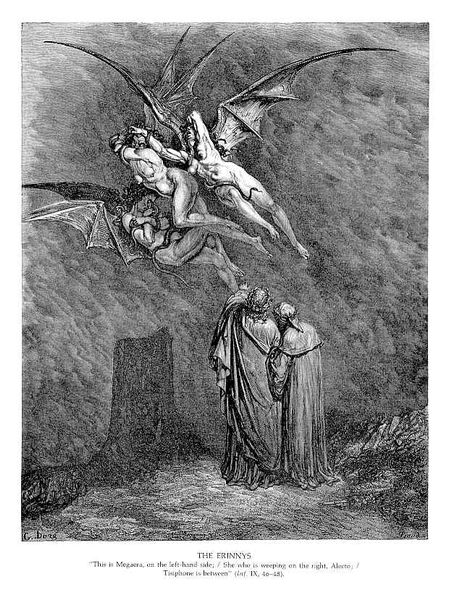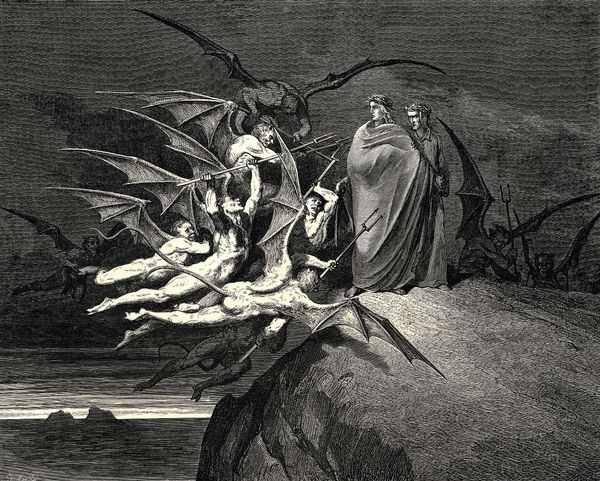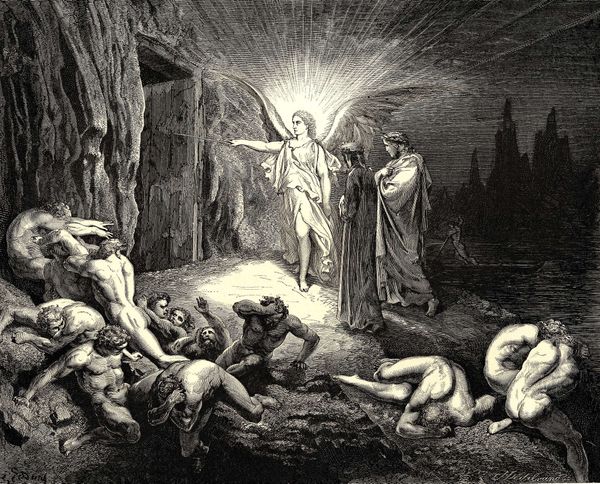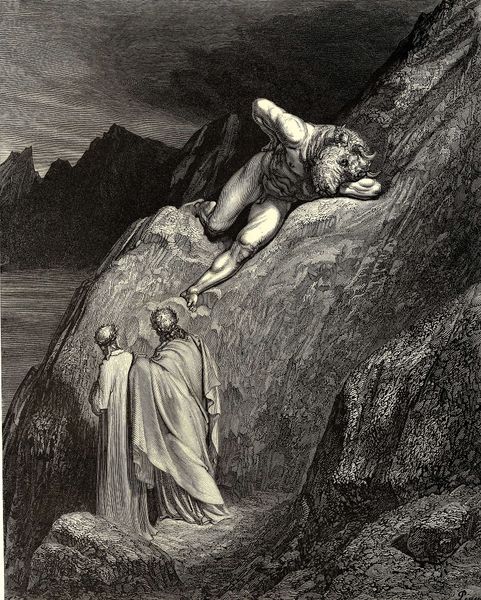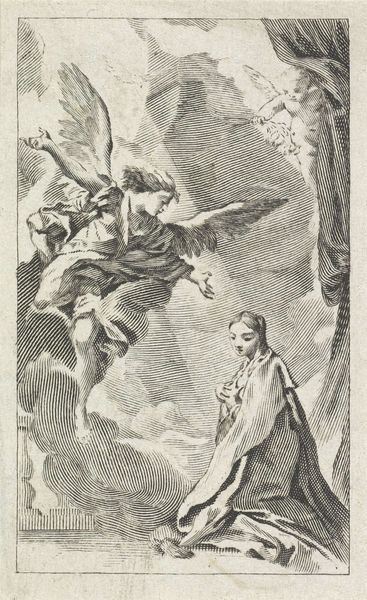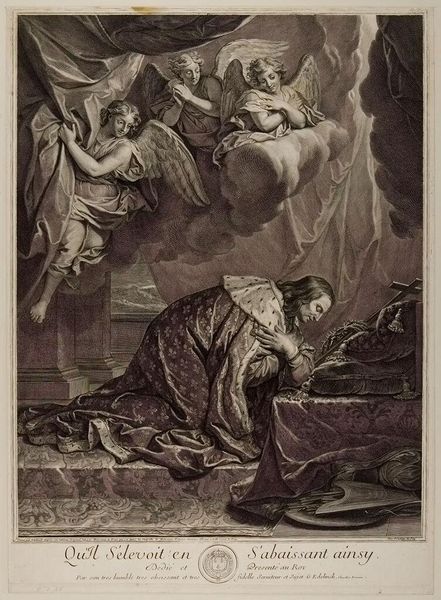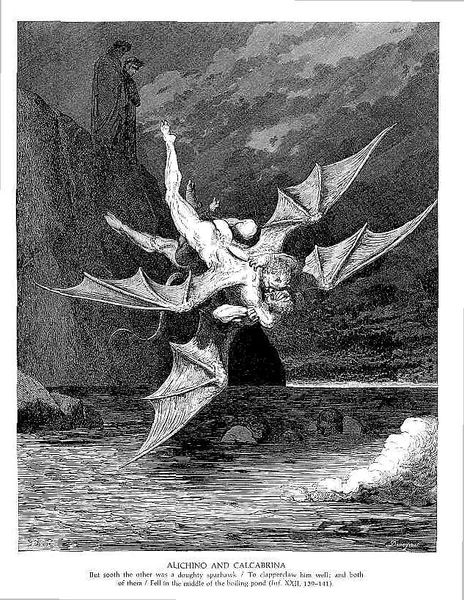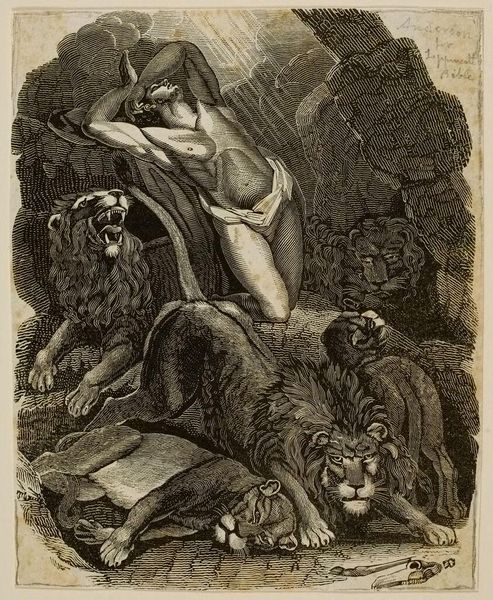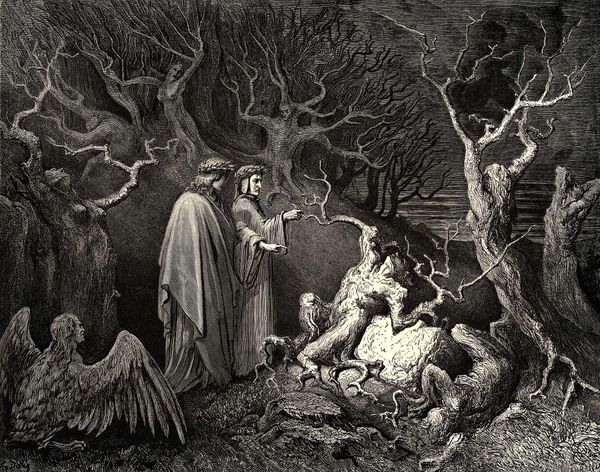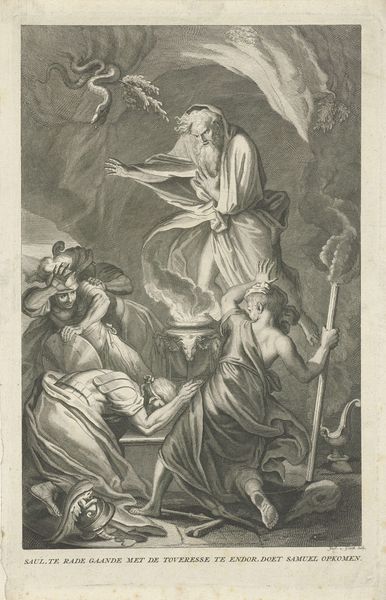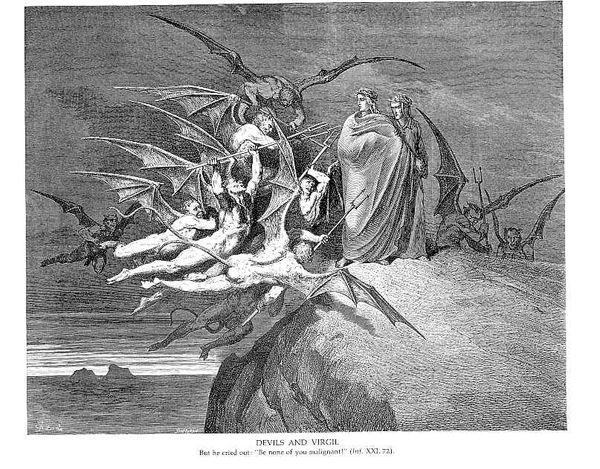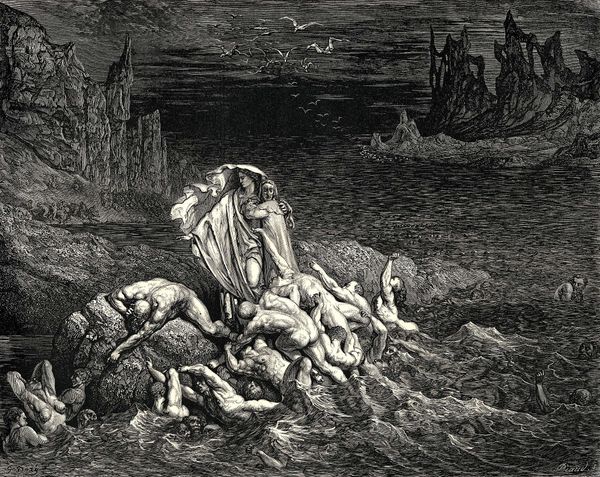
drawing, intaglio, graphite, engraving
#
drawing
#
narrative-art
#
intaglio
#
pencil sketch
#
sculpture
#
charcoal drawing
#
figuration
#
charcoal art
#
romanticism
#
line
#
graphite
#
history-painting
#
charcoal
#
graphite
#
engraving
Copyright: Public domain
Gustave Dore made this engraving, "The Inferno, Canto 9," to illustrate Dante's "Divine Comedy," a foundational work of Western literature. Dore’s dramatic depiction taps into the 19th-century fascination with the medieval period, but more importantly, it reflects anxieties of the time, anxieties that were as much social and political as they were religious. Consider the rapid industrialization of Europe. New social classes were created. Established religious and social institutions were being questioned. Dore’s image resonates with this sense of upheaval. He uses stark contrasts to emphasize the terror of Dante’s vision. The tormented figures and grotesque demons embody a world where traditional values are inverted. The engraving is more than an illustration, it’s a commentary on the social and spiritual uncertainties of Dore's time. To fully appreciate Dore’s work, one can delve into the social history of 19th-century France, exploring its literature, philosophy, and art criticism. By understanding the social context, we gain a deeper insight into the enduring power of this image.
Comments
No comments
Be the first to comment and join the conversation on the ultimate creative platform.
